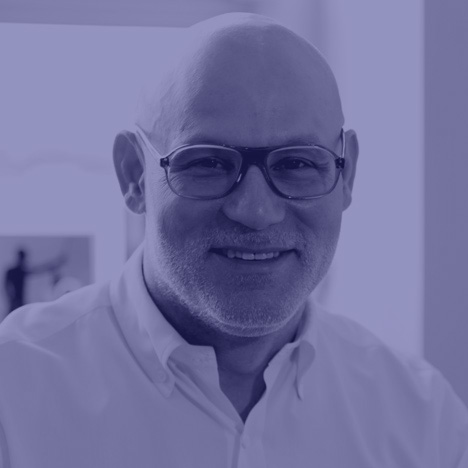
Craig Robins: "The one thing you can't do is replace something truly historical"
Dezeen Book of Interviews: with Design Miami kicking off in a few days, this week's extract from our new book is an interview with the fair's co-founder Craig Robins, who explained his role in helping transform Miami from a run-down resort into a major cultural centre.
Craig Robins, CEO of property development company Dacra, was born in Miami and started acquiring properties in South Beach in the 1980s while still studying law at university. He became instrumental in renovating the city's iconic Art Deco district in the nineties, before moving on to redevelop the Miami Design District and co-founding Design Miami.
Dezeen Book of Interviews: our new book, featuring conversations with 45 leading figures in architecture and design, is on sale now
"Initially I wanted to have a studio space so I could invite artists to paint or make art in Miami," he told Dezeen last December, when we interviewed him at Design Miami as part of our Dezeen and MINI World Tour. "I knew South Beach was a rundown place where perhaps I could find an inexpensive studio."
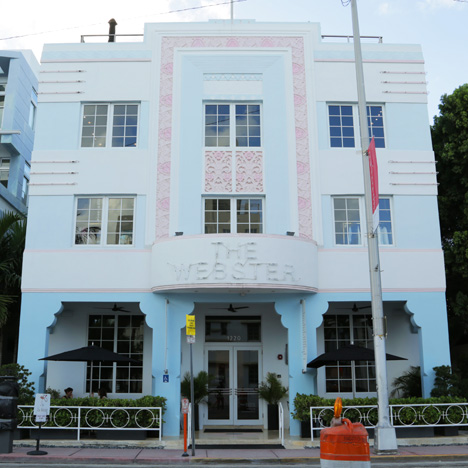
Together with collaborators including fellow property developer Tony Goldman and Island Records founder Chris Blackwell, Robins renovated many of the Art Deco hotels along South Beach’s Ocean Drive and the surrounding area at a time when the general consensus was that the run-down and dilapidated buildings "should be torn down."
"There was a group of us who not only thought they should be preserved but that they could become this incredible legacy that Miami could offer to the world," Robins said. "So that became my career: trying to figure out how to adapt these great historical structures and put businesses that function in a contemporary way in them."
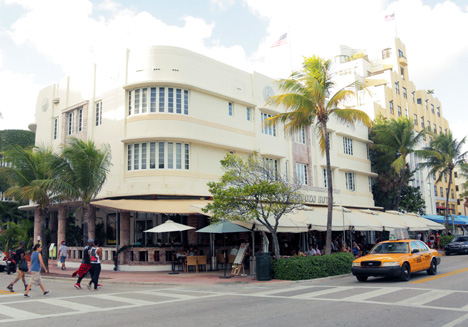
With artist Keith Haring opening a shop in the area and famous musicians Gloria and Emilio Estefan investing in hotels, South Beach developed into a booming holiday destination throughout the nineties. But Robins said that Miami only started to be taken seriously as a cultural destination once the first Art Basel art fair was hosted in South Beach in 2002.
"It was a brilliant decision," he told Dezeen. "Basel is such a traditionally powerful, conservative city. And when you combine the solidity and power of Basel with the sex appeal and excitement of Miami, you get this amazing result that was beyond what anyone could have imagined."
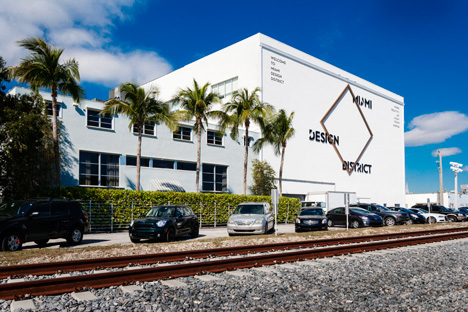
By that time, Robins had sold most of his properties in South Beach and had moved his attention to redeveloping another run-down area of the city – Miami's Design District, so called because of the proliferation of furniture companies that set up there in the 1920s.
In 2005, Robins launched the first Design Miami collectible design fair in the Design District alongside Art Basel. The success of the fair helped boost the redevelopment of the whole area, Robins claimed.
"People began to realise that furniture could be collected like art," he said. "The Design District became more and more recognised as a cultural destination. Restaurants began to open, there were more art experiences."

Soon, the fashion industry became interested in the area, which brought in more money and further redevelopment, which is still ongoing.
"Fashion is a powerful industry and when you combine it with the other businesses we have, it fuels the ability to do more art and design," Robins said. "Artists like John Baldessari and Nate Lowman are doing buildings. We commissioned a prototype from Konstantin Grcic. We’re doing buildings with architects like Aranda\Lasch, Sou Fujimoto, Keenen Riley."
"We’re getting a lot of freedom to do things. The goal is to make it a great place to shop, find furniture, eat, but most importantly to just walk around."
You can read the full interview below, which is one of 45 interviews with leading figures in architecture and design featured in Dezeen Book of Interviews.
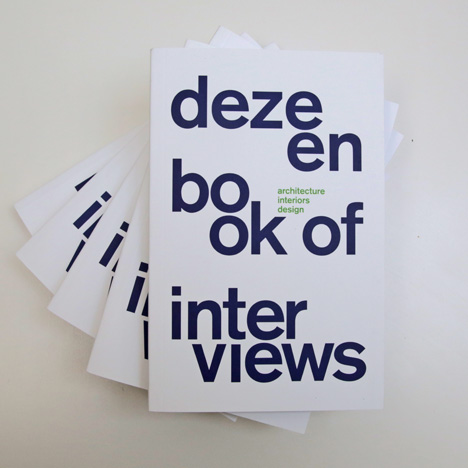
Ben Hobson: You were born here in Miami. Tell me about your relationship with the city.
Craig Robins: I was born in Miami Beach and I’ve always lived in Miami. I went away to school, of course – spent some time at the University of Michigan and the University of Barcelona – then I came home after college and went to law school. When I was in law school, I started acquiring properties on South Beach.
Ben Hobson: Why did you start investing in South Beach property?
Craig Robins: Initially I wanted to have a studio space so I could invite artists to paint or make art in Miami. I knew South Beach was a rundown place where perhaps I could find an inexpensive studio. I met this incredible guy named Tony Goldman, who became an important mentor. He had the perfect studio but told me if I wanted it, I had to buy a 50 percent interest in some buildings he owned, including the one with the studio, which I did. I began renovating one of the buildings to create storage spaces in order to afford the studio. I didn’t really know anything. One of the great things about having Tony as a partner was that he gave me the freedom to do a lot of it myself but also provided guidance.
Ben Hobson: How did that then develop?
Craig Robins: The first exciting thing was that I convinced Keith Haring to open a variation of his New York store, Pop Shop, in South Beach. That was really a wonderful moment. I remember Keith at the door and he was customising things for people and there was a line down the block. There was really nothing else in South Beach at that time, so it was a great way to start. The store did really well.
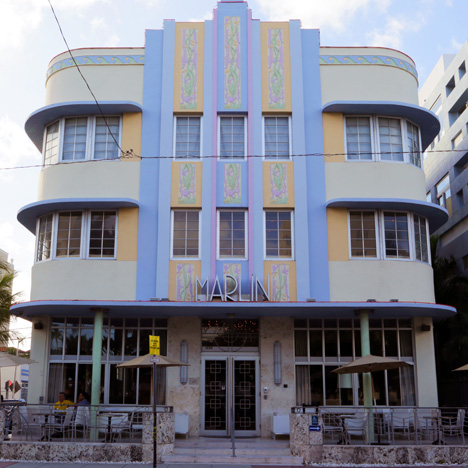
Ben Hobson: What was South Beach like in those days? How has it changed?
Craig Robins: I remember in 1982 I was in college in Barcelona and I would tell people I was from Miami and they would immediately say, "Julio Iglesias!" Then I came home and a few years later I went back and I’d tell people I’m from Miami and they would say, "Miami Vice!" That was their image of Miami. A few years later when I was working in South Beach and I’d tell people I was from Miami, they would think of an Art Deco building. That was an important renaissance in Miami. We had the world’s largest collection of Art Deco and Mediterranean Revival structures in the same place.
But it was very rundown. It had become a retirement village for an ageing population that was dying off. There were also areas that had become difficult slums. There was a crack epidemic in the US, all of which contributed to the neighbourhood spiralling downward. There were a lot of people who thought the buildings should be torn down. There was a group of us who not only thought they should be preserved but that they could become this incredible legacy that Miami could offer to the world.
So that became my career: trying to figure out how to adapt these great historical structures and put businesses that function in a contemporary way in them. It was a great time. I learned the value of design and style and doing things in a special way, because even though people didn’t see it at the time, it was the unique thing Miami had. Anyone can build new buildings and if it’s good architecture, that’s a good thing. But the one thing you can’t do is replace something truly historical. We had that going for us.
Ben Hobson: Was this an unusual approach to development at the time?
Craig Robins: It was a big contrast to how things were done in the States. South Beach is much more European. The structures are smaller. The neighbourhood is pedestrian-friendly, which in Miami is almost nonexistent. One of the things that was really nice was working with another visionary, Chris Blackwell. Chris had sold Island Records and wanted to start in hotels. He and I did a lot of investing in South Beach, opened a bunch of hotels. From Chris I learned to produce creativity because he approached real estate like a guy who made records with artists and ended up with a great creative product. That’s still true for me today.
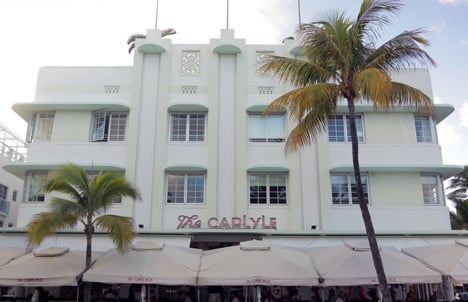
Ben Hobson: Which hotels did you work on together?
Craig Robins: The first hotel that Chris and I did together, which is sadly not anything like it was, is the Marlin. It’s a beautiful, historical structure. At the time I was living in this other magnificent building adjacent to it called the Webster.
Some of the other properties that were especially prominent were the Victor and the Tides hotels, the Cavalier, the Cardozo, the Carlyle... Some of them we developed or collaborated on with others or sold to interesting people. Gloria and Emilio Estefan bought the Cardozo from us early on and did a beautiful job with it.
Part of what we realised was that it was better for somebody else to own a property, to make their own expression, so the neighbourhood had this competitive, collaborative spirit, where everybody was expressing themselves in their own way – the opposite of what Disney World does, which is also an effective business model but its idea is to give you a fantasy with something that’s fake and our business model is to do something that’s real.
Ben Hobson: How did these hotels help transform South Beach into the hip destination it is today?
Craig Robins: When I look back at South Beach, there were obviously hotels but there was no one to stay in them. There was a beautiful beach. Locals would go to the beach but people weren’t flying to Miami to go to the beach. By redoing the Art Deco buildings, a lot of media came to do fashion shoots, bringing in the beautiful people, creating an industry in the neighbourhood. That began to attract more people and more life, the idea of restaurants and nightclubs.
Hotels became more in demand and the need for office space for music and film things happening in South Beach increased. These synergies came together and began to really churn in a way that was unexpected and, to some degree, uncalculated, because it was something new, a completely different approach to anchoring a neighbourhood. It wasn’t like getting Marriott to build some boring hotel. It was a special place. Everything that was done in South Beach was all handmade, in a sense. They were all boutique hotels. There were no chains for years, which I think made it really cool.
Ben Hobson: So Miami overcame the seedy reputation and now it is emerging as a serious cultural centre. How did that happen?
Craig Robins: Miami with South Beach had become known as "funinthesun." The transformation from a hedonistic place that people were flying to from around the world to a city of cultural substance really happened with Art Basel, not just as a commercial fair
but also as a cultural happening, with parties and events, with exhibitions that weren’t necessarily oriented for profit.
Ben Hobson: And why did Art Basel come to Miami?
Craig Robins: I can’t speak for Art Basel but clearly it was a brilliant decision – not just because of the obvious success, but if you think about it, Basel is such a traditionally powerful, conservative city. And when you combine the solidity and power of Basel with
the sex appeal and excitement of Miami, you get this amazing result that was beyond what anyone could have imagined.
Ben Hobson: Did Art Basel influence your decision to launch the Design Miami fair and the Design District?
Craig Robins: It led to the next, somewhat contrarian innovation – that design was as collectible as art. So we founded the Design Miami collectors fair, which I continue to chair. Suddenly furniture design was being collected side by side with this great art fair. It was an enormous success. People began to realise that furniture could be collected like art, so you could do these limited-edition contemporary pieces, which offer a level of freedom and experimentation, a creative approach that’s different from mass-production. The Design District became the place where that vision was launched, and it became more and more recognised as a cultural destination. Restaurants began to open, there were more art experiences.
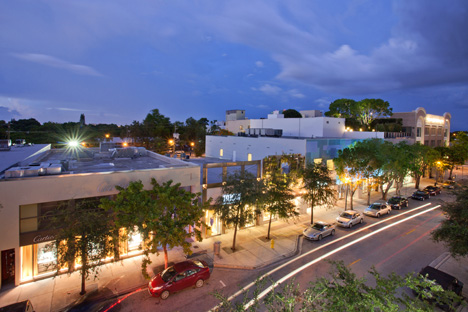
Ben Hobson: So tell me about the Miami Design District. What is the history of the area?
Craig Robins: The Design District is located in what was originally a pineapple farm. It’s hard to believe, looking at the urban sprawl now. This guy Theodore Moore, who built the Moore furniture company, built his first furniture store in the area in the ’20s. It’s still an unbelievable structure, not only from the exterior but when you walk into this old furniture showroom, the proportions are just perfect. Even more perfect because Zaha Hadid – she won Design Miami’s Designer of the Year in 2005 – was commissioned to do Elastika, a magnificent installation inside the space. To me it’s a great example of how a brilliant architect or designer can interact with a historical structure and enhance the experience, not detract from it. Elastika does that beautifully in the Moore building.
Over the years the Design District became a centre for furniture design, but by the mid ’80s, as places became more and more "mallified" in America, the district went into disrepair.
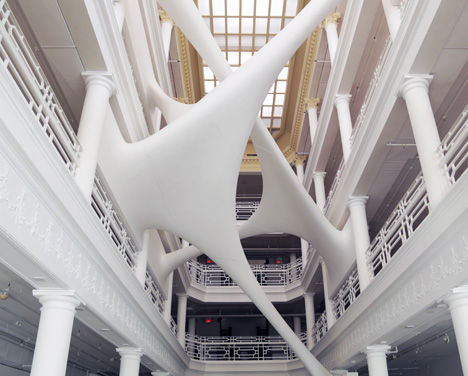
Ben Hobson: What did you see in the area and how did you redevelop it?
Craig Robins: I felt that things were becoming so commercialised in South Beach that Miami needed a creative laboratory, an important place where interesting things could happen and where the definition of what could happen was not so rigid. So part of what we did was we brought back furniture design stores. That in itself was a great challenge. It was contrary to contemporary thought at the time.
When we started in the Design District, what I found astounding was that almost nowhere in America could you see furniture design other than in a fortress-like mall. People were prohibited to enter if they didn’t have a licence. It was treated like a prescription drug where it would maybe hurt you to see it.
The competitive malls also had a monopoly. They had a radius clause, so retailers weren’t allowed to open within 20 or 40 miles of where the mall was. A lot of the designers who got commissions from the stores in the mall didn’t want design to be on the street. They didn’t want the client to be able to walk in and look at things. They wanted to control the environment, and we took that on.
Our great collaborator in the neighbourhood was the furniture designer Holly Hunt, who has a beautiful showroom in the Design District and is an important person in the American design industry. She was one of our first tenants, and that began a process where now you can walk around the Design District and see a lot of great furniture design. Suddenly there was business here and everything was thriving.
But I realised that design doesn’t bring in people. People might buy a sofa every ten years. It’s not like fashion or restaurants. So we were doing well but we didn’t have a lot of people. We thought about that and said, "This neighbourhood should really take a longer-term approach and continue with that idea of the creative laboratory. We should invest in culture, not necessarily profit and business, to continue to build the brand."
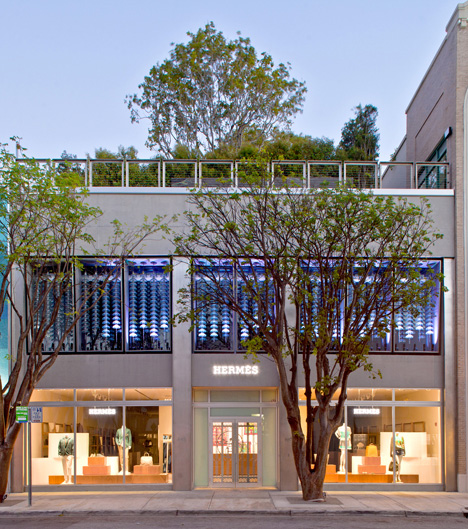
Ben Hobson: Today the Design District is as well-known for its fashion stores as it is for art and furniture design. How did that come about?
Craig Robins: Furniture was very successful. Restaurants were starting to open. It was then that I realised the final ingredient that was going to really catapult this neighbourhood to another level of creative offering would be if we could bring the fashion business here.
At first I got some great brands here. Christian Louboutin opened a store and said, "I want people to walk through an art installation into the store." I thought he was crazy. Who would go through this space into the store to buy shoes? Well, I have to say it’s one of the most successful stores per square foot in Miami.
That led to other brands. So now stores are being operated or built by Vuitton, Dior, Céline, Pucci, Hermès, Cartier... Everybody is doing global flagships that are interesting expressions. I think we have a chance to be the most interesting neighbourhood in the world, with this balance of art, design, fashion and food.
Ben Hobson: What’s next for the Design District?
Craig Robins: Fashion is a powerful industry and when you combine it with the other businesses we have, it fuels the ability to do more art and design. Artists like John Baldessari and Nate Lowman are doing buildings. We commissioned a prototype from Konstantin Grcic. We’re doing buildings with architects like Aranda\Lasch, Sou Fujimoto, Keenen Riley. We’re getting a lot of freedom to do things.
Businesses will be more inclined to establish themselves here. The goal is to make it a great place to shop, find furniture, eat, but most importantly to just walk around. You can come here and just enjoy yourself. A lot of elements will make this neighbourhood
a pleasant experience, hopefully.
Ben Hobson: When will the Design District reach completion?
Craig Robins: It’ll happen in waves, and in part that’s intentional,because we don’t want it to be like a mall. We want it to have new experiences constantly. Going back to the music analogy, we want to build our fan base over time: we started off in a little bar playing songs and now we’re getting to bigger venues and hopefully one day we’ll be in football stadiums. That’s the goal.
The first phase of the Design District is complete and there are some great shops. In November 2014 there will be 15 new buildings; the Baldessari and the Grcic installations will be inaugurated. The Fujimoto building will be complete, as will this Aranda\Lasch building that will house four brands, including Tom Ford. Some of the brands are doing their own buildings and they will also be really powerful additions to the neighbourhood.
By the end of 2015 we’ll probably have finished a series of condos and a boutique hotel. There will be 16 more stores, 15 buildings, retail shops, restaurants – a continual experience. There’s a reason for you to come back each year for the next three years and catalogue the art, design and fashion happening.
